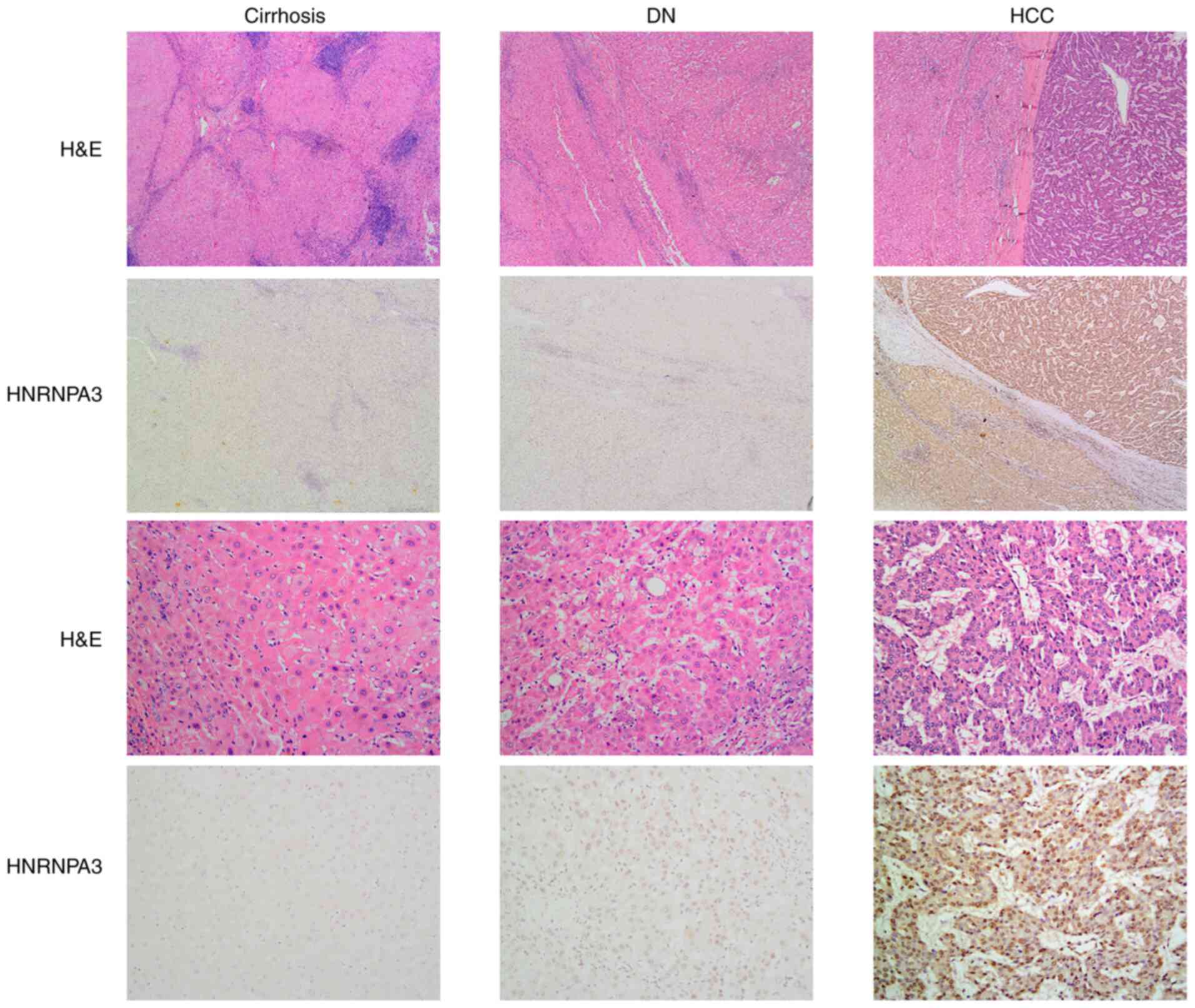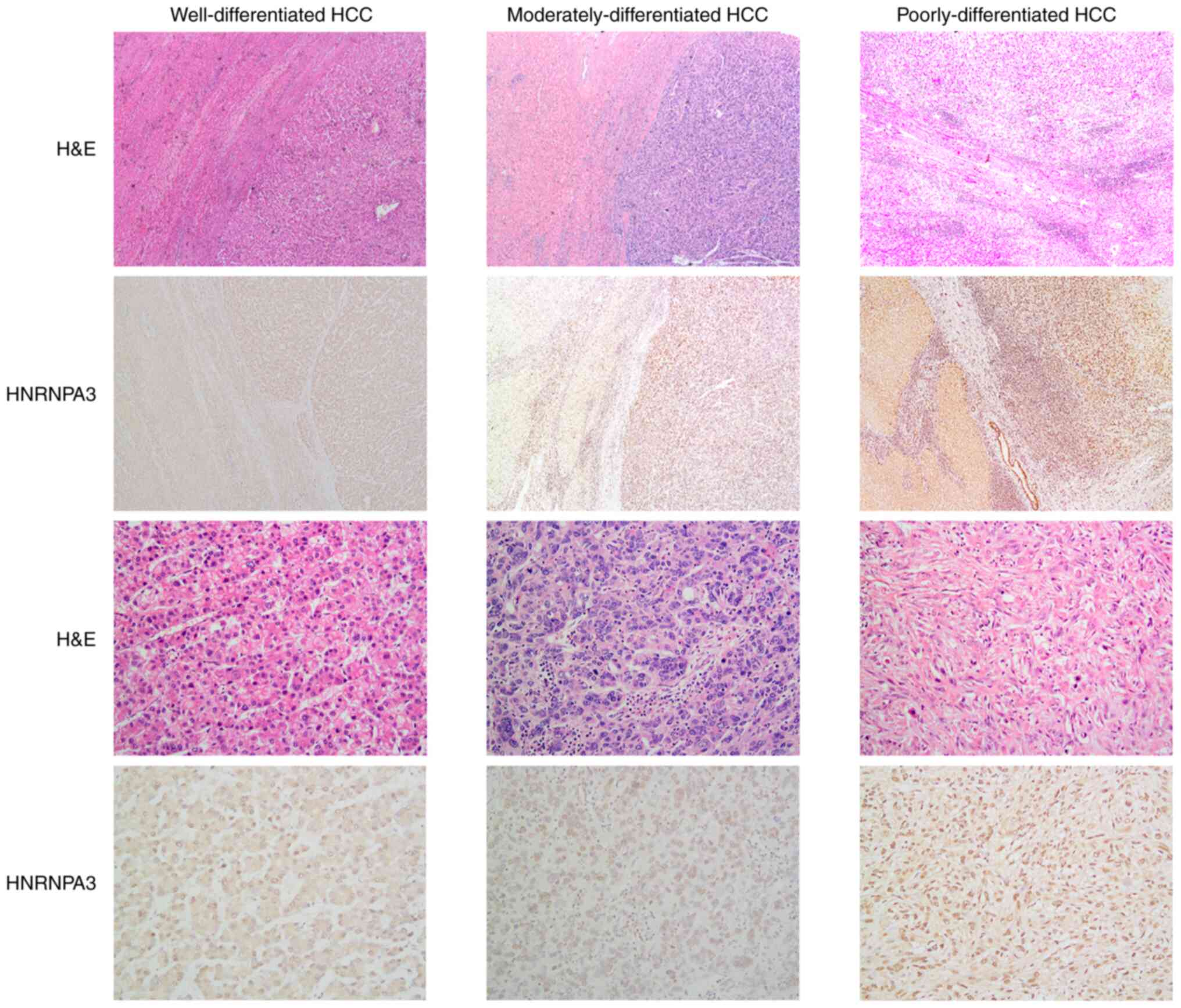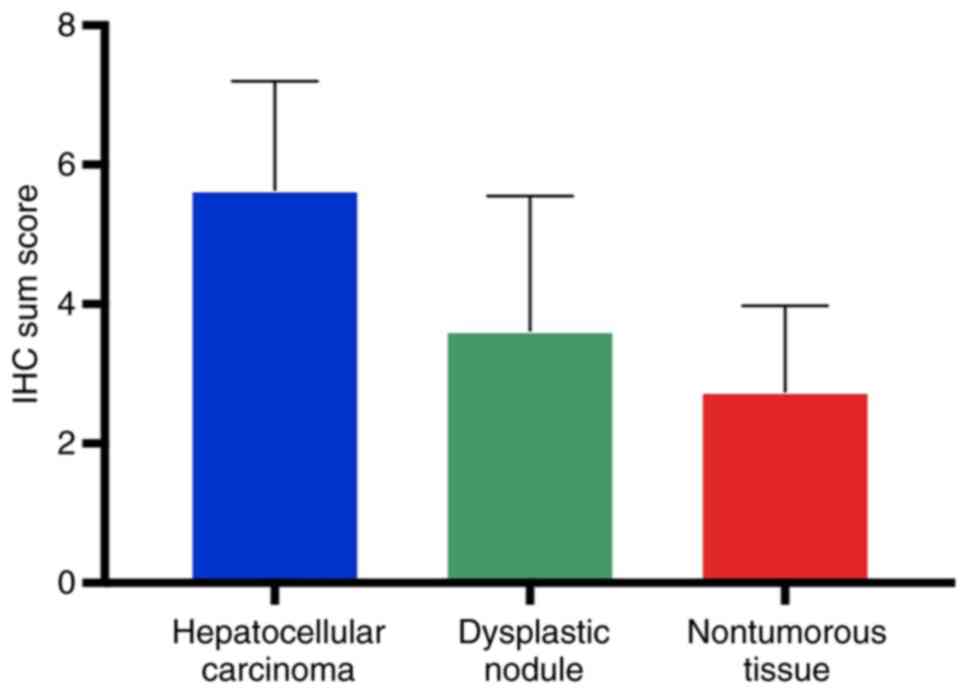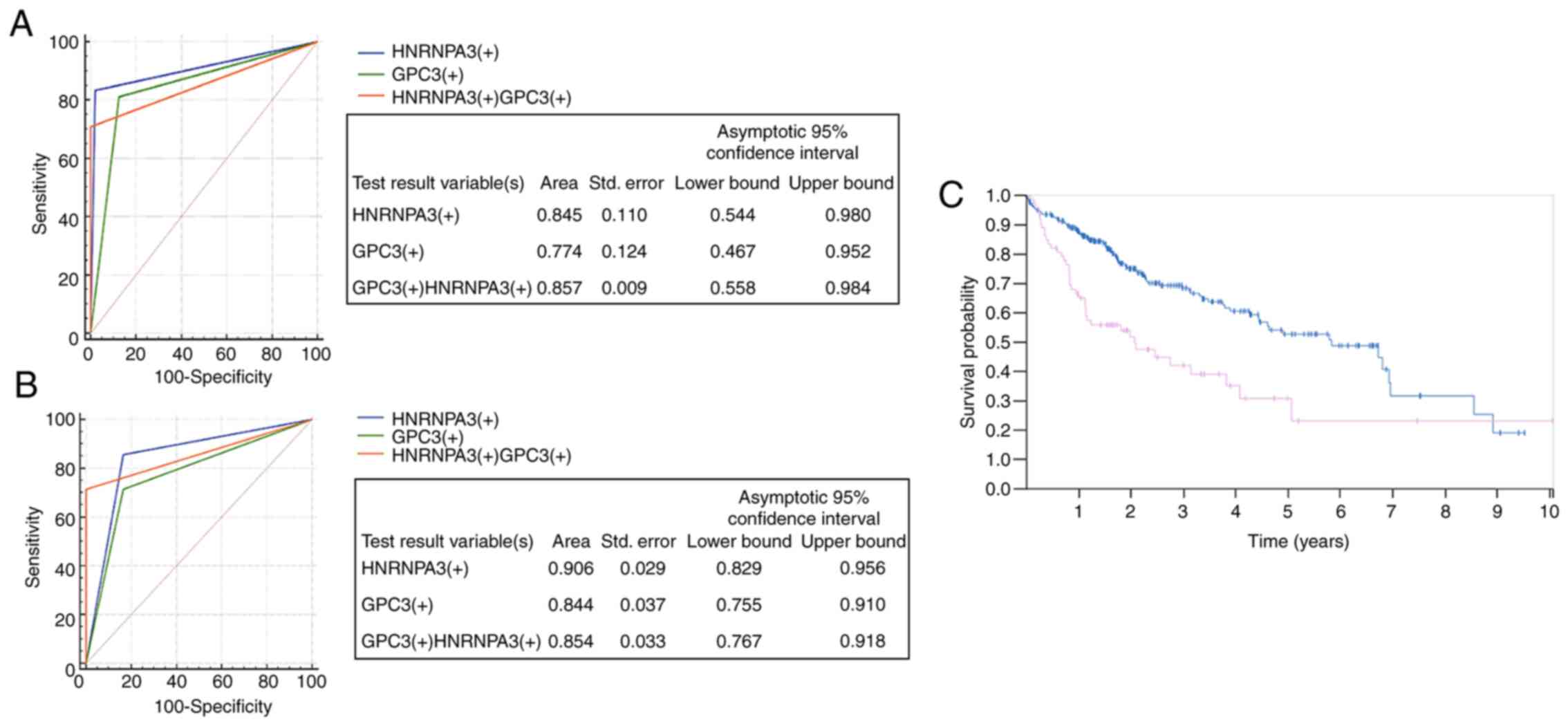|
1
|
Llovet JM, Zucman-Rossi J, Pikarsky E,
Sangro B, Schwartz M, Sherman M and Gores G: Hepatocellular
carcinoma. Nat Rev Dis Primers. 2:160182016. View Article : Google Scholar : PubMed/NCBI
|
|
2
|
Kudo M: Multistep human
hepatocarcinogenesis: Correlation of imaging with pathology. J
Gastroenterol. 44 (Suppl 19):S112–S118. 2009. View Article : Google Scholar
|
|
3
|
Saito K, Kotake F, Ito N, Ozuki T, Mikami
R, Abe K and Shimazaki Y: Gd-EOB-DTPA enhanced MRI for
hepatocellular carcinoma: Quantitative evaluation of tumor
enhancement in hepatobiliary phase. Magn Reson Med Sci. 4:1–9.
2005. View
Article : Google Scholar : PubMed/NCBI
|
|
4
|
Inchingolo R, Faletti R, Grazioli L,
Tricarico E, Gatti M, Pecorelli A and Ippolito D: MR with
Gd-EOB-DTPA in assessment of liver nodules in cirrhotic patients.
World J Hepatol. 10:462–473. 2018. View Article : Google Scholar : PubMed/NCBI
|
|
5
|
Saito J, Kim SR, Kudo M, Imoto S, Ando K,
Nakajima T, Fukuda K, Otono Y, Kim SK, Komaki T, et al:
Well-differentiated hepatocellular carcinoma detected as
hypovascularity by only CT during hepatic arteriography. Intern
Med. 51:885–890. 2012. View Article : Google Scholar : PubMed/NCBI
|
|
6
|
Sugimoto K, Kim SR, Imoto S, Tohyama M,
Kim SK, Matsuoka T, Yano Y, Kudo M and Hayashi Y: Characteristics
of hypovascular versus hypervascular Well-differentiated
hepatocellular carcinoma smaller than 2 cm-Focus on tumor size,
markers and imaging detectability. Dig Dis. 33:721–727. 2015.
View Article : Google Scholar : PubMed/NCBI
|
|
7
|
Borentain P, Carmona S, Mathieu S, Jouve
E, El-Battari A and Gérolami R: Inhibition of E-selectin expression
on the surface of endothelial cells inhibits hepatocellular
carcinoma growth by preventing tumor angiogenesis. Cancer Chemother
Pharmacol. 77:847–856. 2016. View Article : Google Scholar : PubMed/NCBI
|
|
8
|
Deng WG, Fu Y, Li YL and Sugiyama T:
Potential role of p53 mutation in chemical hepatocarcinogenesis of
rats. World J Gastroenterol. 10:46–52. 2004. View Article : Google Scholar : PubMed/NCBI
|
|
9
|
Ho M and Kim H: Glypican-3: A new target
for cancer immunotherapy. Eur J Cancer. 47:333–338. 2011.
View Article : Google Scholar : PubMed/NCBI
|
|
10
|
Yamauchi N, Watanabe A, Hishinuma M,
Ohashi K, Midorikawa Y, Morishita Y, Niki T, Shibahara J, Mori M,
Makuuchi M, et al: The glypican 3 oncofetal protein is a promising
diagnostic marker for hepatocellular carcinoma. Mod Pathol.
18:1591–1598. 2005. View Article : Google Scholar : PubMed/NCBI
|
|
11
|
Bakheet AMH, Zhao C, Chen JN, Zhang JY,
Huang JT, Du Y, Gong LP, Bi YH and Shao CK: Improving pathological
early diagnosis and differential biomarker value for hepatocellular
carcinoma via RNAscope technology. Hepatol Int. 14:96–104. 2020.
View Article : Google Scholar : PubMed/NCBI
|
|
12
|
Di Tommaso L, Franchi G, Park YN, Fiamengo
B, Destro A, Morenghi E, Montorsi M, Torzilli G, Tommasini M,
Terracciano L, et al: Diagnostic value of HSP70, glypican 3, and
glutamine synthetase in hepatocellular nodules in cirrhosis.
Hepatology. 45:725–734. 2007. View Article : Google Scholar : PubMed/NCBI
|
|
13
|
Mishra N, Reddy KS, Timilsina U, Gaur D
and Gaur R: Human APOBEC3B interacts with the heterogenous nuclear
ribonucleoprotein A3 in cancer cells. J Cell Biochem.
119:6695–6703. 2018. View Article : Google Scholar : PubMed/NCBI
|
|
14
|
Boukakis G, Patrinou-Georgoula M,
Lekarakou M, Valavanis C and Guialis A: Deregulated expression of
hnRNP A/B proteins in human non-small cell lung cancer: Parallel
assessment of protein and mRNA levels in paired tumour/non-tumour
tissues. BMC Cancer. 10:4342010. View Article : Google Scholar : PubMed/NCBI
|
|
15
|
Nagtegaal I and Washington M:
WHO_Classification_of_Tumours_Digestive.pdf. Nagtegaal I, Klimstra
D and Washington M: World Health Organization; 2019
|
|
16
|
Nascimento C, Bottino A, Nogueira C and
Pannain V: Analysis of morphological variables and arterialization
in the differential diagnosis of hepatic nodules in explanted
cirrhotic livers. Diagn Pathol. 2:512007. View Article : Google Scholar : PubMed/NCBI
|
|
17
|
Shao S, Li Z, Gao W, Yu G, Liu D and Pan
F: ADAM-12 as a diagnostic marker for the proliferation, migration
and invasion in patients with small cell lung cancer. PLoS One.
9:e859362014. View Article : Google Scholar : PubMed/NCBI
|
|
18
|
Nguyen TB, Roncalli M, Di Tommaso L and
Kakar S: Combined use of heat-shock protein 70 and glutamine
synthetase is useful in the distinction of typical hepatocellular
adenoma from atypical hepatocellular neoplasms and
well-differentiated hepatocellular carcinoma. Mod Pathol.
29:283–292. 2016. View Article : Google Scholar : PubMed/NCBI
|
|
19
|
Uhlen M, Zhang C, Lee S, Sjöstedt E,
Fagerberg L, Bidkhori G, Benfeitas R, Arif M, Liu Z, Edfors F, et
al: A pathology atlas of the human cancer transcriptome. Science.
357:eaan25072017. View Article : Google Scholar : PubMed/NCBI
|
|
20
|
Forner A, Reig M and Bruix J:
Hepatocellular carcinoma. Lancet. 391:P1301–P1314. 2018. View Article : Google Scholar
|
|
21
|
Singal AG, Nehra M, Adams-Huet B, Yopp AC,
Tiro JA, Marrero JA, Lok AS and Lee WM: Detection of hepatocellular
carcinoma at advanced stages among patients in the HALT-C trial:
Where did surveillance fail. Am J Gastroenterol. 108:425–432. 2013.
View Article : Google Scholar : PubMed/NCBI
|
|
22
|
Marrero JA, Feng Z, Wang Y, Nguyen MH,
Befeler AS, Roberts LR, Reddy KR, Harnois D, Llovet JM, Normolle D,
et al: Alpha-fetoprotein, Des-gamma carboxyprothrombin, and
Lectin-bound Alpha-fetoprotein in early hepatocellular carcinoma.
Gastroenterology. 137:110–118. 2009. View Article : Google Scholar : PubMed/NCBI
|
|
23
|
Fakan S, Leser G and Martin TE:
Ultrastructural distribution of nuclear ribonucleoproteins as
visualized by immunocytochemistry on thin sections. J Cell Biol.
98:358–363. 1984. View Article : Google Scholar : PubMed/NCBI
|
|
24
|
Moumen A, Masterson P, O'Connor MJ and
Jackson SP: hnRNP K: An HDM2 target and transcriptional coactivator
of p53 in response to DNA damage. Cell. 123:1065–1078. 2005.
View Article : Google Scholar : PubMed/NCBI
|
|
25
|
Makeyev AV, Kim CB, Ruddle FH, Enkhmandakh
B, Erdenechimeg L and Bayarsaihan D: HnRNP A3 genes and pseudogenes
in the vertebrate genomes. J Exp Zool Part A Comp Exp Biol.
303A:259–271. 2005. View Article : Google Scholar
|
|
26
|
Tanaka E, Fukuda H, Nakashima K, Tsuchiya
N, Seimiya H and Nakagama H: HnRNP A3 binds to and protects
mammalian telomeric repeats in vitro. Biochem Biophys Res Commun.
358:608–614. 2007. View Article : Google Scholar : PubMed/NCBI
|
|
27
|
David CJ, Chen M, Assanah M, Canoll P and
Manley JL: HnRNP proteins controlled by c-Myc deregulate pyruvate
kinase mRNA splicing in cancer. Nature. 463:364–368. 2010.
View Article : Google Scholar : PubMed/NCBI
|
|
28
|
Chen M and Manley JL: Mechanisms of
alternative splicing regulation: Insights from molecular and
genomics approaches. Nat Rev Mol Cell Biol. 10:741–754. 2009.
View Article : Google Scholar : PubMed/NCBI
|
|
29
|
Harada Y, Nakamura M and Asano A:
Temporally distinctive changes of alternative splicing patterns
during myogenic differentiation of C2C12 cells. J Biochem.
118:780–790. 1995. View Article : Google Scholar : PubMed/NCBI
|


















